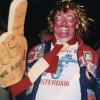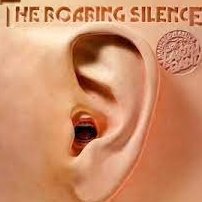

BL65
Members-
Content count
930 -
Joined
-
Last visited
-
26.04.53 New Cross v BELLE VUE 2 points from 3 rides as reserve (fell twice) 19.08.59 NEW CROSS v Wimbledon 12 from 5 rides (3 wins, lost once to Moore) 26.08.59 NEW CROSS v Southampton 12 from 5 rides (3 wins, lost once to Knutson but won another hear when Bjorn fell) 02.09.59 New Cross v BELLE VUE 12 from 5 rides (two wins) 09.09.59 NEW CROSS v World Stars 9 from 5 rides (2 wins, beat Fundin, lost to Knutson and Moore) 16.09.59 NEW CROSS v Poole 10+1 from 5 rides (2 wins) 23.09.59 Tom Farndon Trophy 15 from 5 rides (beat Briggs, Knutson and Moore) 25.05.60 Southern Riders' CQR (guest) 10 from 5 rides (3 wins) 03.08.60 New Cross v BELLE VUE 13+1 from 6 rides (3 wins, paid win, ef in the other, 2 -1 to Briggs, one of which was the ef) 24.8.60 Tom Farndon Trophy 6 from 4 (withdrew from last ride, won one race, lost to Moore) 07.08.60 ENGLAND v Australasia 5+1 from 6 rides (won one race, lost to Briggs twice and Moore twice) 03.05.61 New Cross v BELLE VUE 8 from 4 rides (2 wins and a second) 10.05.61 London v THE REST 9 from 4 rides (2 wins, beat Moore and Briggs) 07.06.61 New Cross v BELLE VUE 13+1 from 5 rides (3 wins) 26.07.61 ENGLAND v New Zealand v Australia WC Qualifier, 13 from 6 rides (4 wins, lost to Moore, beat Briggs twice) 16.08.61 NEW CROSS v Southampton 8 from 4 rides (one win, lost to Moore twice and Briggs) 23.08.61 NEW CROSS V The Kiwis (8+2 from 5 rides (no race wins, lost to Briggs twice and Moore) 06.09.61 Tom Farndon Trophy 12 from 5 rides (3 wins, lost to Briggs, beat Moore and Knutson)
-
Don't forget the 1959 Tom Farndon Memorial meeting, when Peter won with 15 points. Briggs got 14, Moore 10 and Knutson 7.
-
The Moore family moved from Tasmania to New Zealand in 1948 when Ronnie was 14. Les Moore, Ronnie’s father, described his occupation in the late 1940s as ‘showman’, initially with Skulthorpe’s all-Australian rodeo and circus. He travelled around giving displays on his ‘wall of death’. Ronnie also tried and mastered the wall by 1947. As the family stayed in New Zealand, Ronnie opted to represent his adopted country.
-
It is one of John Chaplin's photo's, from the 1951 test series. It is in The John Somerville Collection and shown as being at Wembley. Probably the first heat, which Norman Parker won, with Moore second and Williams third. Young fell.
-
I forgot to mention Stanislaw Tkocz, twice World Team Cup winner with Poland in the 1960s and a member of 11 Polish league championship winning teams. He qualifies as a Stan.
-
I can think of Stan Hart, Stan Dell, Stan Clark, Stan Bedford, Stan Holey, Stan Mauger, Stan Lemon, Stan Pepper, Stan Page, Stan Smith, Stan Greatrex, Stan Williams, Stan Taylor, Stan Pennell, Stan Spencer, Stan Lanfear, Stan Burnett, Stan Beardsall, Stan Lupton, Stan Dewhurst, Stan Jenkins, Stan Hodson, Stan Hawkins, Stan Crouch, Stan Bradbury, Stan Catlett and Stan Baines but my favourite speedway Stanley has to be Stanley Stadium (Liverpool).
-
Something that perhaps not many people know is that when Split Squire Francis appeared for Wembley Reserves at Harringay in the opening meeting there in 1947 he was named in the programme as Wally Waterman. An easy mistake to make, I suppose.
-
There were two others, Leo Ramm and Leo Lungo. A few more who have ridden in Britain - there may be riders with the same forenames who have ridden elsewhere: Dene Davies Chum (Edwin) Taylor Etienne Oliver Ezra Deakin Claude Rye Julie (Jules) Benson Marvyn Cox Krister Marsh Elwood Stilwell Dent (Denton) Oliver Elvis Jones Tara O’Callaghan Ham (Hamlet) Burrill Denzil Kent (Goldy) Godwin Restall Dingle Brown Dyson Harper Deon Prinsloo Hulley Howard Judd Drew Crawley Rous Grieves Davidson Hank Bird Harwood Pike Milton Caisley Murray Burt Toby Boschoff Troy Pratt Shorty (Alvin) Schirmer Harvey Swanson Dominic Perry Gerard (Gerry) Scott Plus some who used 'unique' nicknames: Bat (Bernard) Byrnes Blos (Kenneth) Bromfield Gruff (Cecil) Garland Bunny (Bernard) Wilcox Dilly (David) Gittins Tyburn Gallows (Raymond Humphrey) Sandy (Alexander) McGillivray Dai (David) Evans Dink (David) Philpotts (Crocky) Emerson Rawding Butch (John) Williams Clarrie (Clarence) Eldridge
-

Abandoned Meetings and Track Records
BL65 replied to Lioness's topic in Speedway News and Discussions
If a league match, for example, is abandoned without the result being declared: - no team points are awarded regarding the league table - no rides and points count in the riders' averages - the fixture does not count in official 'records of achievement', so effectively the races completed become unofficial - if a rider sets a new best time in an unofficial 'race', such as in a practice it does not count as an official record ..... so why would a track record time set in an abandoned meeting stand? On the other hand: - the riders will have been paid for the races they competed in - at the time the races took place they were 'official' until subsequently deemed otherwise - if a team drops out of the league the results are expunged from the records - if a team drops out of the league the riders' scores no longer count in their averages - expunged results are no longer official, although they were at the time they were achieved - a track record set during a meeting subsequently removed from the official records still stands ...... so why wouldn't a track record time set in an abandoned meeting still stand. In my opinion the record should stand even if the meeting is abandoned. It was an official race when it took place. Ivor Brown held the track record at Cradley Heath for nearly 6 years with a time of 68.4 seconds set against New Cross on 20th July 1963. Eric Boocock eventually set a new record of 67.0 seconds on 12th May 1969. In 1963 New Cross dropped out of the Provincial League in August and the results were expunged from the official records. The meeting at Cradley Heath was 'official' at the time it took place. Subsequently, Cradley Heath had the league points from the meeting taken away, Ivor Brown had the points scored taken away but he kept the track record. -
According to the Beatles' song, 'Money Can't Buy Me Love' and there was certainly no love lost between them.
-
Surprising that it took until 1969 for Ivan to move away as the catalogue of disagreements between the pair started in 1964.
-
Newport County, a Welsh equivalent, formerly of Somerton Park, are in a comfortable mid-table position in Division 2. Poole Town were relegated from the Southern League after leaving Poole Stadium in the 1990s but are now currently back in the Southern League Premier Division South, currently three points clear of the relegation zone. Fleetwood Town still play at Highbury Stadium and have progressed from non-league football to currently play in Division 1 of the football league, although in danger of relegation. All three clubs have re-formed at various times.
-
Not forgetting Billy Yates (Preston) and Edwin Youngs (Norwich).
-
That seems conclusive enough.
-
How many sources state that Erik's time was 56.7? If two or more then it remains a puzzle at present. The only other thing that springs to mind was that it was an error/typo and should have been 57.6 rather than 56.7. Do the meeting reports refer to Erik breaking the track record? If not, then......






